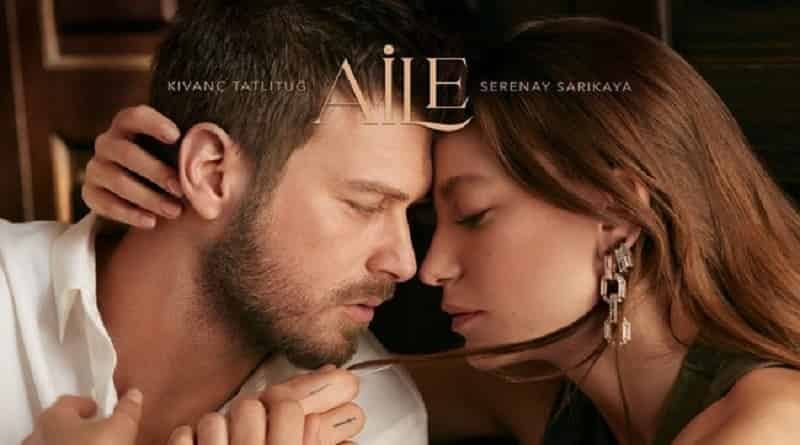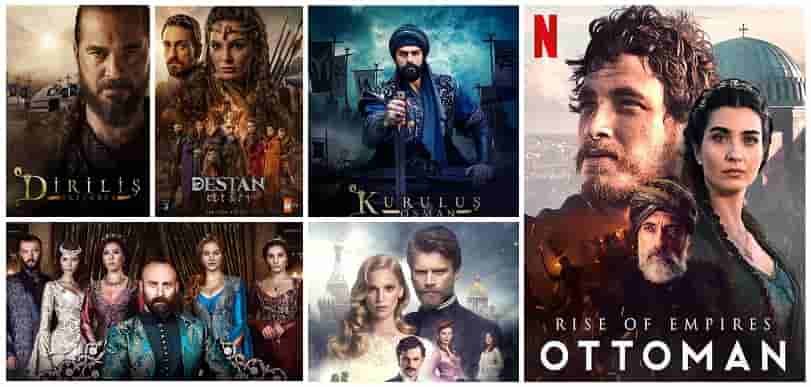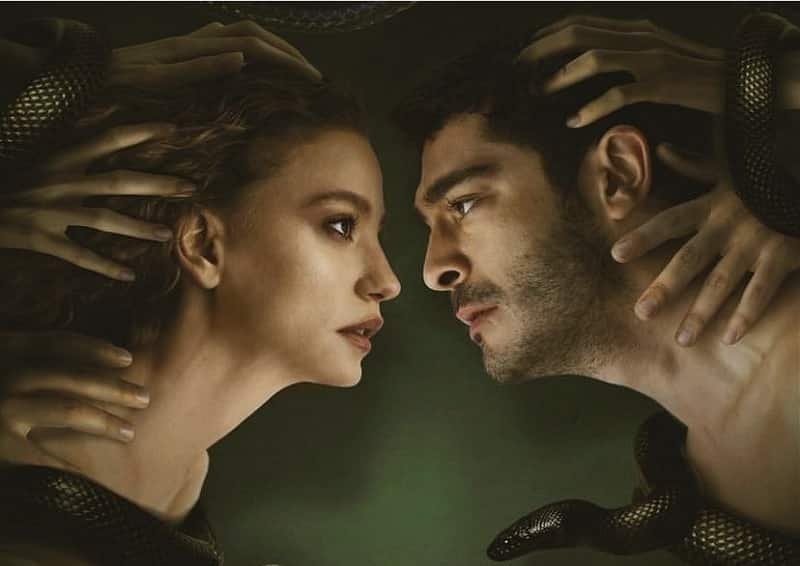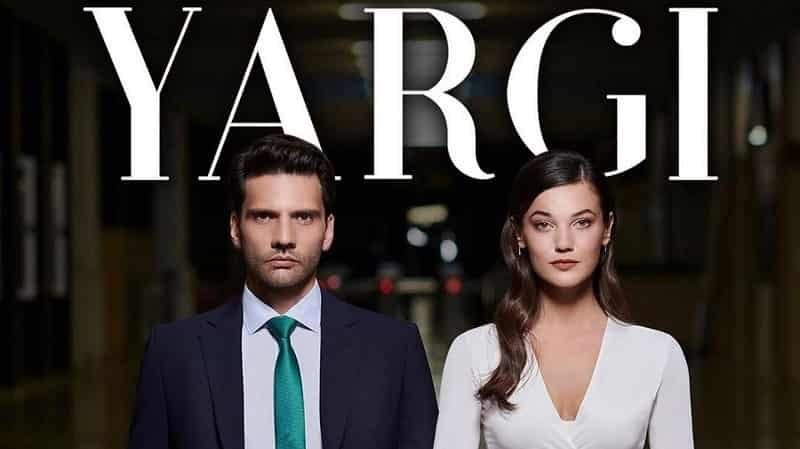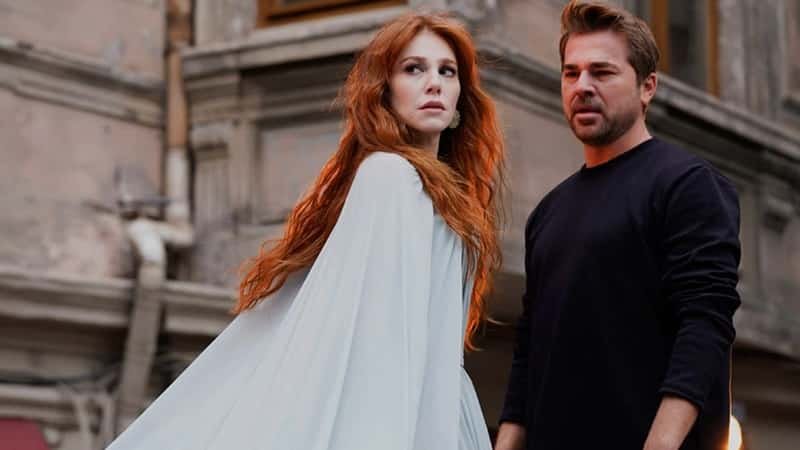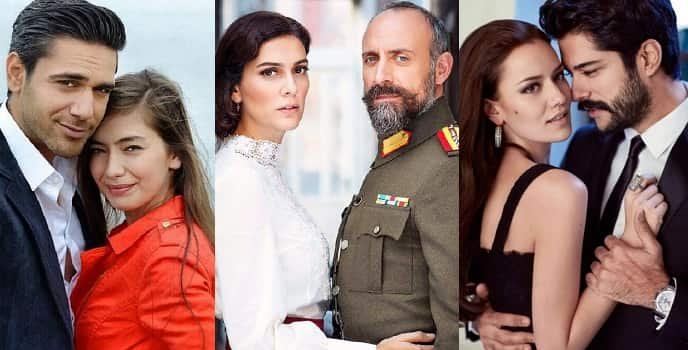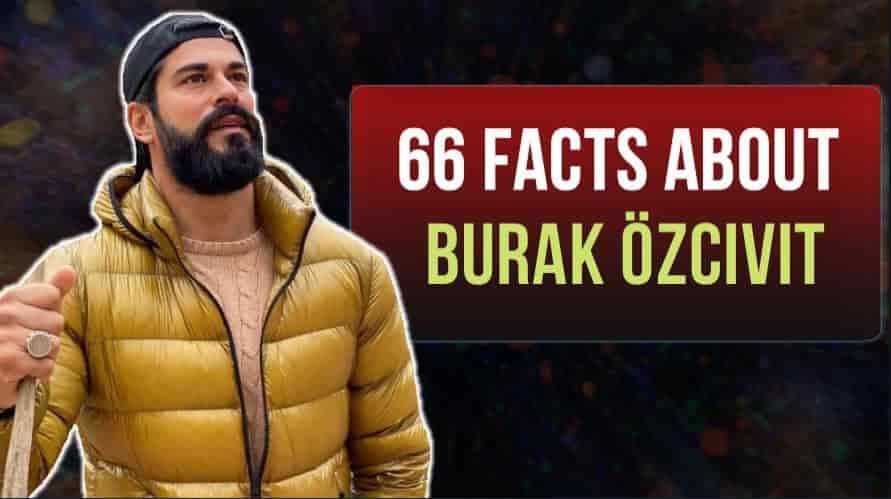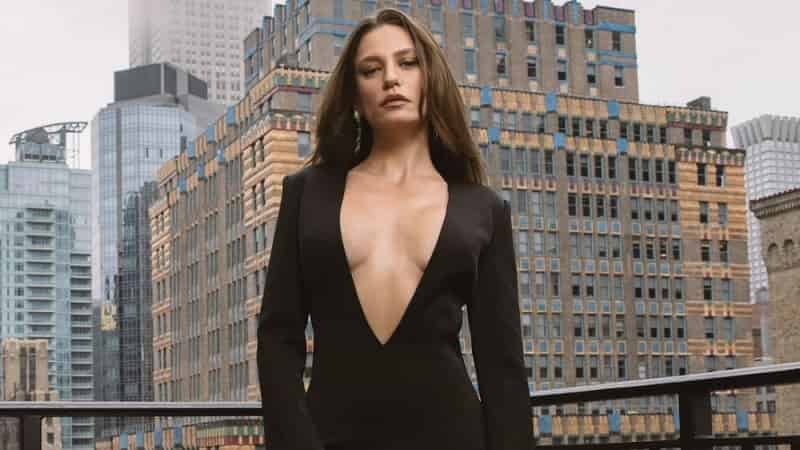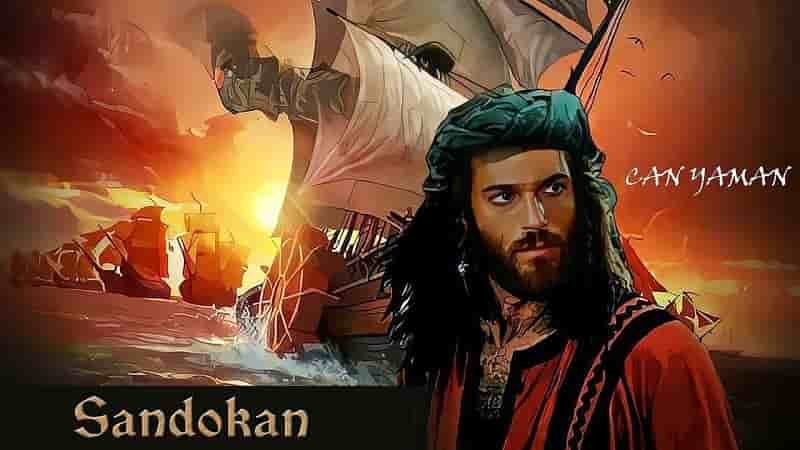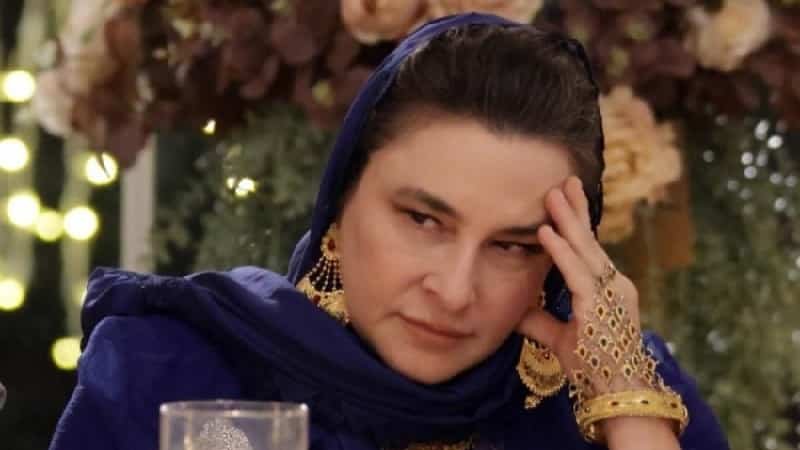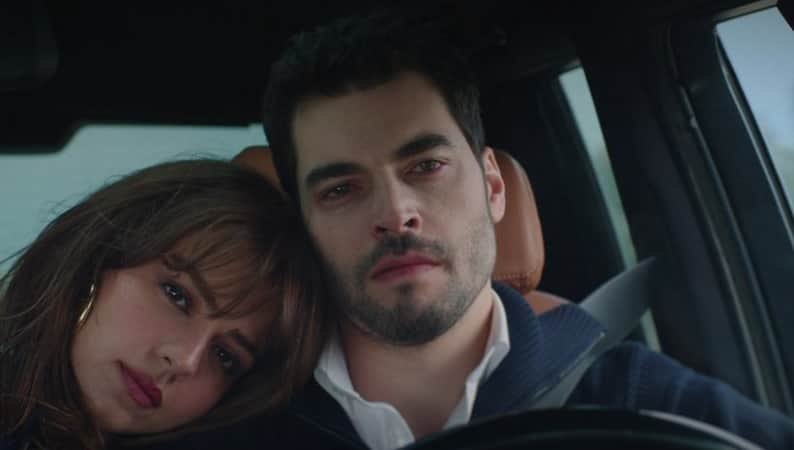Guillermo del Toro speaks about his new Netflix horror anthology series, Cabinet of Curiosities
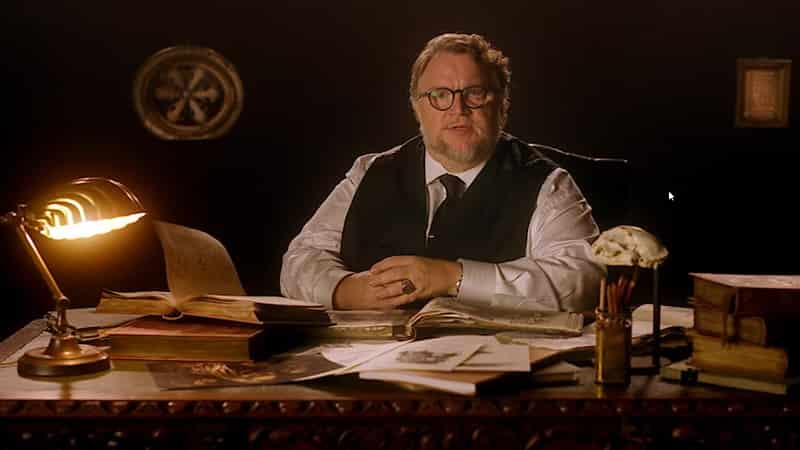
Oscar winner filmmaker Guillermo del Toro speaks about his new Netflix horror anthology series, Cabinet of Curiosities(2022).
Courtesy of Netflix, we present an interview with Guillermo del Toro about his latest project, the horror anthology series Cabinet of Curiosities. Guillermo del Toro’s Cabinet of Curiosities has a total of 8 episodes that premiered over the course of 4 days on Netflix, two episodes per day at the same time every night.
The launching of Guillermo del Toro’s Cabinet of Curiosities was Netflix’s first cinematic event, called Chills Halloween, which started Tuesday, October 25, 2022, and ended on Friday, October 28, 2022. Read More about the series ↵
Where did the idea of the Cabinet of Curiosities come from?
Guillermo del Toro: I grew up watching all the anthologies: Outer Limits, The Twilight Zone, Night Gallery, One Step Beyond, and Thriller. I love the Black Mirror series, but I wondered why there are no more anthologies. They are very difficult to collect. [Laughs] It’s like shooting eight movies at the same time, with many complications and complexities and different temperaments and flavors. I think that was the idea: can we capture the golden age of the fantasy anthologies we grew up with?
How would you define the term Cabinet of Curiosities? What is it for you?
Guillermo del Toro: Hundreds of years ago, when travel was a good that few could afford and people still wanted to understand the wonders of the world, curiosities were collected by navigators, adventurers, and charlatans and were exhibited in a room that was called the Cabinet of Curiosities. Often you had the skull of a large mammal or the horn of a narwhal – you called it a unicorn horn – and you had Fiji mermaids, which were stuffed animals. People came to see them and they were a kind of status symbol.
The person who shows these curiosities has opened a new world to the spectators. This was the idea: to make 8 pieces from a collection curated by me, with 8 directors that I like or that I want to feature, to give them complete freedom and let them create a small film between 40 and 60 minutes, as they please, supporting them as best we can. I think it rivals the idea of a Cabinet of Curiosities that is open for viewers to see the world through someone else’s eyes.
What are the most important ingredients for a horror story?
Guillermo del Toro thinks that the genre of horror films has a variable scale, like humor.
Guillermo del Toro: I think that the genre of horror films has a variable scale, like humor. What is scary to you is not scary to me. What is funny to you is not funny to me. Or vice versa. So, there must be an idea behind it. And not necessarily a deep lesson, but an idea.
“Each of the story elements appeals to different things. Some of the stories are very calm and of an adult nature, a quieter “horror”. Others are fun. Some are funny in a sinister way. They are samples of very different flavors. He presents you with different delicacies. Some are salty, some are sweet, so it’s like the best sampling of candy, you get a surprise with every bite.”
Is there a line of connection or are they all individual in terms of theme?
Guillermo del Toro said there is a connection line in the first season of Cabinet of Curiosities
Guillermo del Toro: There is a connection line in the first season, there are hidden things, things that are not obvious at first glance, realities that exist in our normal world. They can come from outer space, they can exist underground, and they can exist in our minds. But the idea is that there is another reality beneath the one we know and which became the theme of the series.
How were the stories chosen?
For Cabinet of Curiosities, Guillermo del Toro compiled a list of 20 stories that he loved as a child.
Guillermo del Toro: I tried to compile a list of 20 stories that I read and loved in anthologies when I was a child. They vary in style and importance. There are some Lovecraft stories that I read when I was young. “Graveyard Rats” by Henry Kuttner, for example, was a story I read when I was very young and I was so scared that I called my father to open the door to my room. Then “Lot 36” and “Murmuring” were ideas that I had for a long time.
“Lot 36” appeared from a personal experience, because I lost a storage space that I had after it was bought at auction by another person. It was a nightmare experience for me to try to redeem what was there. So the character is basically me, who asks the guy who bought my warehouse to give me back my personal things.
Then “Murmuring” came from the kind of quiet horror stories that shed more light on the mood of a protagonist like M.R. James. This is a more traditional story. In classical mythology, birds carry the souls of the dead to the sky, I thought it would be nice to combine those two elements and I decided it was perfect for them.
Then you have The Outside, which is based on Emily Carroll’s Some Other Animal’s Meat. I think she is a great writer and gets into the minds of her protagonists. I thought it would be a great addition to this anthology.
You have Panos Cosmatos (“The Viewing”) who creates an atmosphere and goes with it and, in essence, you are transported into Panos’ world.
Each story seems to have a message.
Guillermo del Toro: I think it is rather the idea that each of the stories has a small journey for the main character. Is it decadence or a dark triumph? For me, “Autopsy” is a perfect example of a story that I read and never forgot. I read it in the 80s and understood that it is not only scary but also exciting to understand that the ultimate triumph of the human being is to sacrifice yourself.
Each of the story elements appeals to different things. Some of the stories are very calm and of an adult nature, a quieter “horror”. Others are fun. Some are funny in a sinister way. They are samples of very different flavors. He presents you with different delicacies. Some are salty, others are sweet, so it’s like the best sample of candy, you get a surprise with every bite.
How did you choose the directors?
Guillermo del Toro chose each director of the horror series “The Cabinet of Curiosities” for a specific reason, their vision of the world.
Guillermo del Toro: Each director was chosen for a different reason. Some directors have a very, very specific vision of the world.
Guillermo Navarro (“Lot 36”) and I have been working together for decades and I’m always amazed at how good a director he is. I worked with him as a cinematographer. But I like what he does as a director.
David Prior (“The Autopsy”) has a precise, relentless, and methodical approach to the fantastic. I love this thing.
Keith Thomas (“Pickman’s Model”) – I saw his first feature film, “The Vigil”, and I was very impressed by the way he treated the horror film in a very real way. Very efficient. And it was a great collaboration.
I’ve admired Ana Lily Amirpour (“The Outside”) for a long time and I’ve worked with her as a partner or consultant or friend several times in her films. I’m always amazed at how precise she is and how crazy her ideas are.
Catherine Hardwicke (“Dreams in the Witch House”) is truly a director of great power and many times her films have moved me in what she tries, in their ambition, scale, and humanity. I wanted to work with her and see how she could substantiate a story that you wouldn’t normally associate with her. But he did a lot of really good fantastic portraits over the years.
ShHow did you choose the directors?
Guillermo del Toro chose each director of the horror series “The Cabinet of Curiosities” for a specific reason, their vision of the world.
Guillermo del Toro: Vincenzo Natali (“Graveyard Rats”) and I have worked together in the past and I’ve always liked what he does. He is a truly audio-visual storyteller and has a special signature.
I think Panos Cosmatos (“The Viewing”) is one of the most special filmmakers working today. I think it can create more than anything… an atmosphere. His films are a clear look into his mind. It has such a specific view of the world and it is very difficult to describe it as anything other than an atmosphere.
Jennifer Kent (“The Murmuring”) made an unforgettable impression with “The Babadook” and “Nightingale”. She has a worldview. She has the most remarkable commitment to her stories and their delivery. She is one of the truly important filmmakers working today, especially in this genre. And I really wanted to work with her and create again an environment in which she feels protected and encouraged, so that she can create an ideal fairy tale.
It was very important for me to give her “The Murmuring” because it’s the story I was closest to. Regarding the emotional tone, I knew it would be the most difficult to play. I trusted Jennifer with the story which she completely absorbed and turned into her story.
With all these directors, I wanted to create a perfect environment for them to deliver a small work, perfectly crafted, and to give them the necessary tools to create these things.
You have a real goldmine when it comes to the distribution of this series.
Guillermo del Toro insisted to cast Crispin Glover in Cabinet of Curiosities because he is the most “Lovecraftian” actor
Guillermo del Toro: No name was imposed. I actually said to every director, “What would be your ideal cast?” and then we went after them. I think the only casting decision I insisted on was Crispin Glover. Because I think for a long time that he is the most “Lovecraftian” actor in a way that I have never seen before.
So I went to Keith and said, “Look, I’m getting down on my knees every episode. I get down on my knees and please, let it be Crispin. Because I think he could play Lovecraft in a way. And because Lovecraft put himself in every story. And I think it’s Pickman. I said, “It should be Crispin.
What were the challenges in the eight stories, each with its own scenography, costumes, and team?
Guillermo del Toro speaks about his partnership with Miles Davis
Guillermo del Toro: Miles and I set out to create an environment where we would have Guy Davis with us to design the creatures in each episode. Then I stayed to supervise the creatures, the sculpture, and the digital universe. This is part of the project.
Then we have Tamara in scenography, which is one of the best in the world at the moment. She created a complete universe for filmmakers.
Luis Sequeira succeeded not only in the beauty of the costumes but also in describing the characters through the costumes. He is again one of the best in the world and I have worked with him for about a decade.
The directors were given all this – plus sound and image – and were told: “here are the keys to the car”, so they could happily go for a ride. And I told them “I’ll be there if you need me to work on special effects makeup, creature design.” And I looked at the images filmed with Miles every day.
The partnership with Miles Dale is crucial because Miles is not only my business partner, but he is also one of the best creative producers I have known in my 30 years in the industry. He is a director and has the necessary insight to know when something specific is needed and when not. And he will fight for each of these parts. And understand that the main goal is to present the creation of a director without interference.


